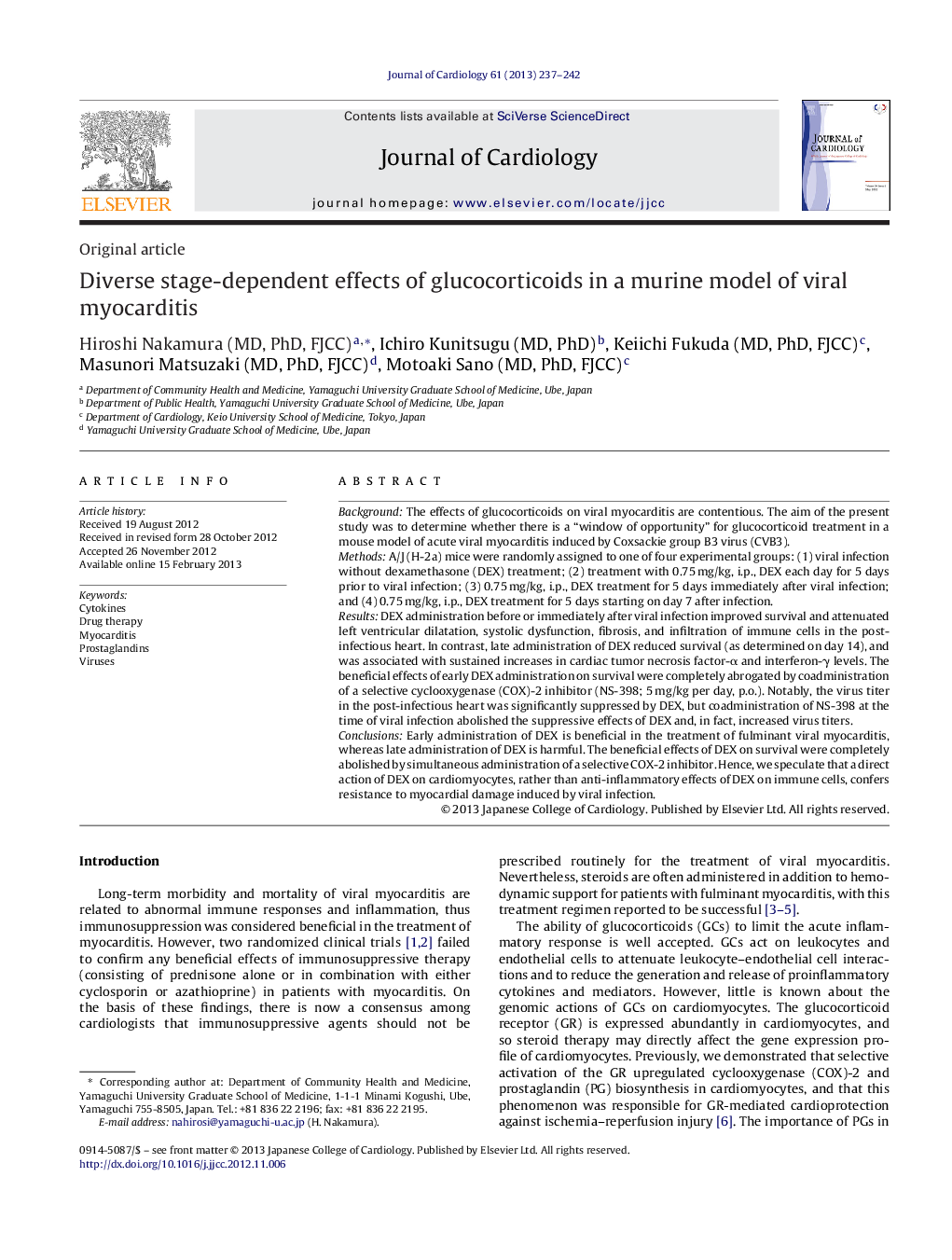| Article ID | Journal | Published Year | Pages | File Type |
|---|---|---|---|---|
| 5984278 | Journal of Cardiology | 2013 | 6 Pages |
BackgroundThe effects of glucocorticoids on viral myocarditis are contentious. The aim of the present study was to determine whether there is a “window of opportunity” for glucocorticoid treatment in a mouse model of acute viral myocarditis induced by Coxsackie group B3 virus (CVB3).MethodsA/J (H-2a) mice were randomly assigned to one of four experimental groups: (1) viral infection without dexamethasone (DEX) treatment; (2) treatment with 0.75 mg/kg, i.p., DEX each day for 5 days prior to viral infection; (3) 0.75 mg/kg, i.p., DEX treatment for 5 days immediately after viral infection; and (4) 0.75 mg/kg, i.p., DEX treatment for 5 days starting on day 7 after infection.ResultsDEX administration before or immediately after viral infection improved survival and attenuated left ventricular dilatation, systolic dysfunction, fibrosis, and infiltration of immune cells in the post-infectious heart. In contrast, late administration of DEX reduced survival (as determined on day 14), and was associated with sustained increases in cardiac tumor necrosis factor-α and interferon-γ levels. The beneficial effects of early DEX administration on survival were completely abrogated by coadministration of a selective cyclooxygenase (COX)-2 inhibitor (NS-398; 5 mg/kg per day, p.o.). Notably, the virus titer in the post-infectious heart was significantly suppressed by DEX, but coadministration of NS-398 at the time of viral infection abolished the suppressive effects of DEX and, in fact, increased virus titers.ConclusionsEarly administration of DEX is beneficial in the treatment of fulminant viral myocarditis, whereas late administration of DEX is harmful. The beneficial effects of DEX on survival were completely abolished by simultaneous administration of a selective COX-2 inhibitor. Hence, we speculate that a direct action of DEX on cardiomyocytes, rather than anti-inflammatory effects of DEX on immune cells, confers resistance to myocardial damage induced by viral infection.
